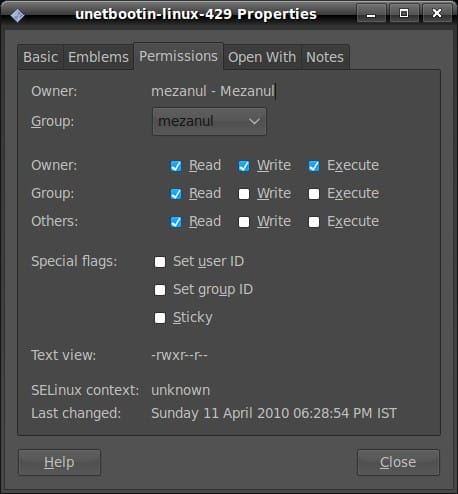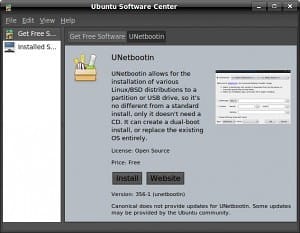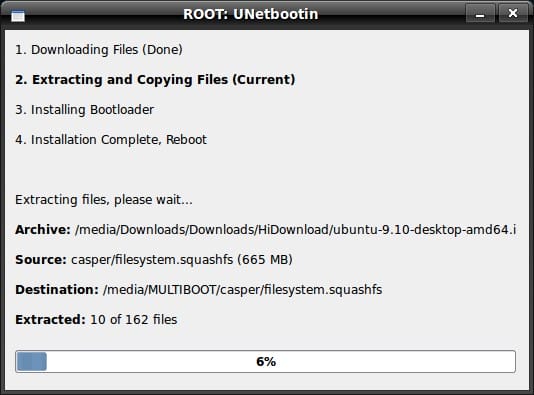Have we ever longed for to have a unstable handling system, that can live inside a small USB peep expostulate as well as we can lift it around with you? Although, this is probable as well as have been around for some time. It was probable for a geek to run a Linux placement from a USB hang just similar to we would have run it from a Compact Disc, but this charge was quite hard to do. Why? Because a routine was really geeky! You had to sort a lot of geeky commands in a terminal as well as if, somehow, we forgot a single or typed something wrong, a routine had to be started all over again. Well, a routine is right away not at all geeky with so most simple applications available that makes it probable for any a single to emanate a bootable USB peep expostulate with any of his prime Linux Distro in it.
How? We did talked about a couple of of them before like:
- How To Boot Multiple ISO from USB regulating Multiboot USB Menu
- How To Create Ubuntu 9.10 Live Bootable USB Flash Drive
This time, with a help of another such great as well as marvelous duplicate calledUNetbootin, a routine of creating a bootable disk can be achieved in just 5 minutes as well as with a couple of clicks!
UNetbootin allows we to emanate bootable Live USB drives for a variety of Linux distributions from Windows or Linux, without requiring we to bake a CD. You can either let it download a single of a manydistributions upheld out-of-the-box for you, orsupply your own Linux .iso file if you’ve already downloaded a single or your preferred placement isn’t upon a list.
The things that we will need before starting a process:
A copy of UNetbootin, atleast 1 GB USB peep drive.
One of a upheld Linux distributions of your choice:
- Ubuntu (and official derivatives)
- Debian
- Linux Mint
- openSUSE
- Arch Linux
- Damn Small Linux
- SliTaz
- Puppy Linux
- gNewSense
- Fr! eeBSD
- NetBSD
- Fedora
- PCLinuxOS
- Sabayon Linux
- Gentoo
- MEPIS
- SimplyMEPIS 8
- AntiX 8
- Zenwalk
- Slax
- Dreamlinux
- Elive
- CentOS
- Mandriva
- FaunOS
- Frugalware Linux
- xPUD
How to make use of UNetbootin to emanate a bootable Linux USB peep drive?
Step 1: Download UNetbootin
Grab a UNetbootin executable. Download fromhere (Windows version) orhere (Linux version), as well as save it upon your desktop.
Step 2: Execute UNetbootin as well as Create your own unstable Linux distribution
After installing UNetbootin, insert a USB peep expostulate in to an dull USB pier of your PC. (Note: This is important, because if we insert it after you’ve non-stop a UNetbootin application,you will not be means to make use of a USB stick.).
Now, double-click upon a UNetbootin executable, to launch a UNetbootin application.
In Linux, right click upon a downloaded file as well as name Properties. Now, click upon a Permissions tab, as well as name Execute for Owner.

Ubuntu users can implement UNetbootin from Ubuntu Software Center.

The rest of a routine is same for both Windows as well as Linux users.
As we can see in a screenshot below, all we have to do right away is to name your favorite Linux placement ISO image file that we have already downloaded, double-check if a USB expostulate selected is a a single that we wish to make bootable as well as click upon OK.
If we have not already downloaded a Linux distribution, then UNetbootin can download it for we as well as then go ahead with a routine of creating a bootable USB stick. All we have to do is name a preferred placement as well as then a version/edition, as well as click upon OK to begin a process.

That’s it! After a routine completes, reboot your appurtenance as well as foot from a USB stick. Have fun with your brand brand new unstable Linux handling system! :)
Faced any worry in regulating UNetbootin, ask your questions below. we will do my most appropriate to troubleshoot your problems as well as answer them as fast as possible.
Source
0 comments:
Post a Comment